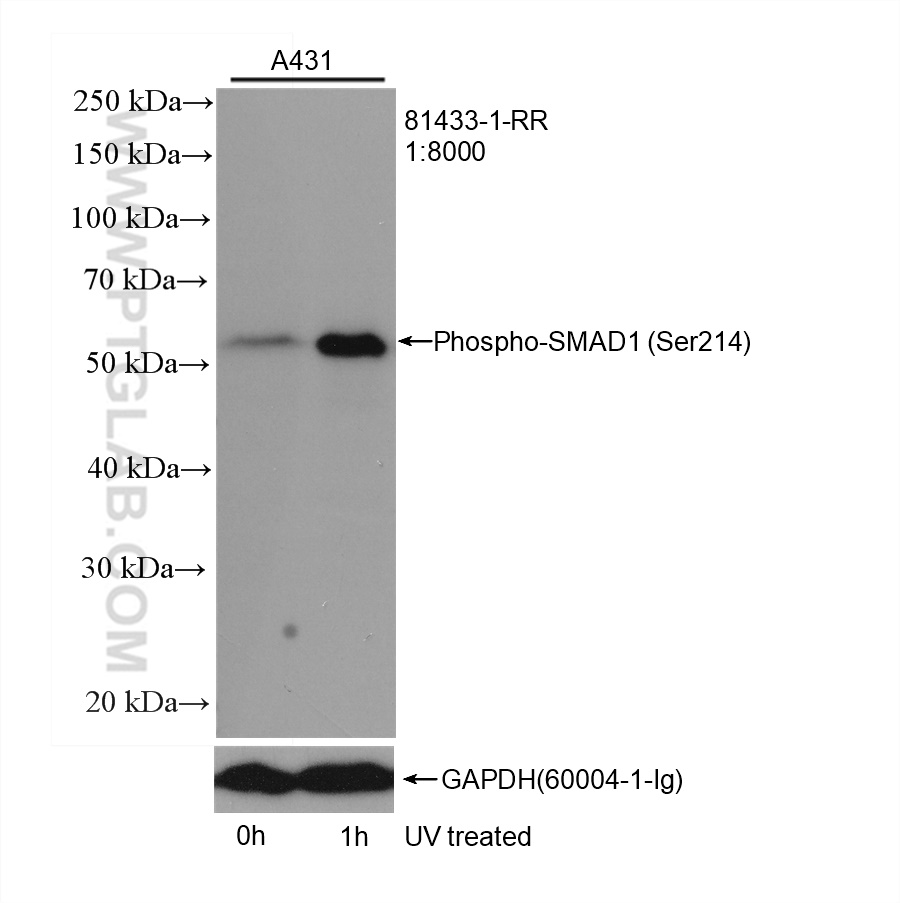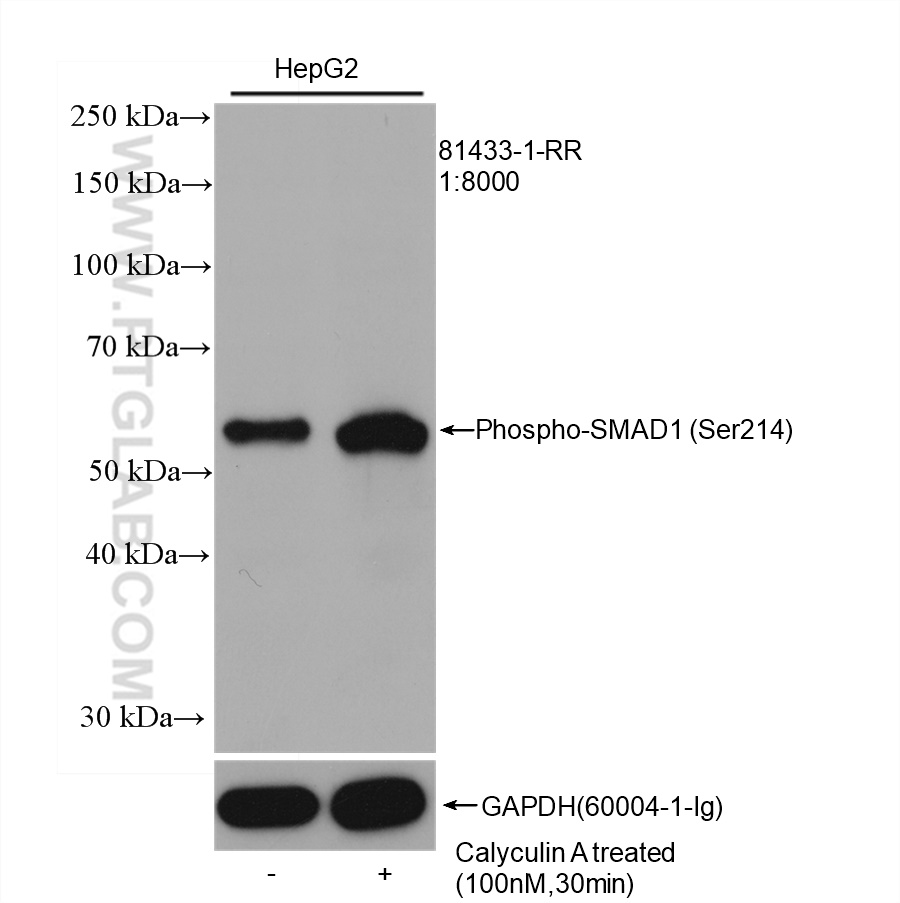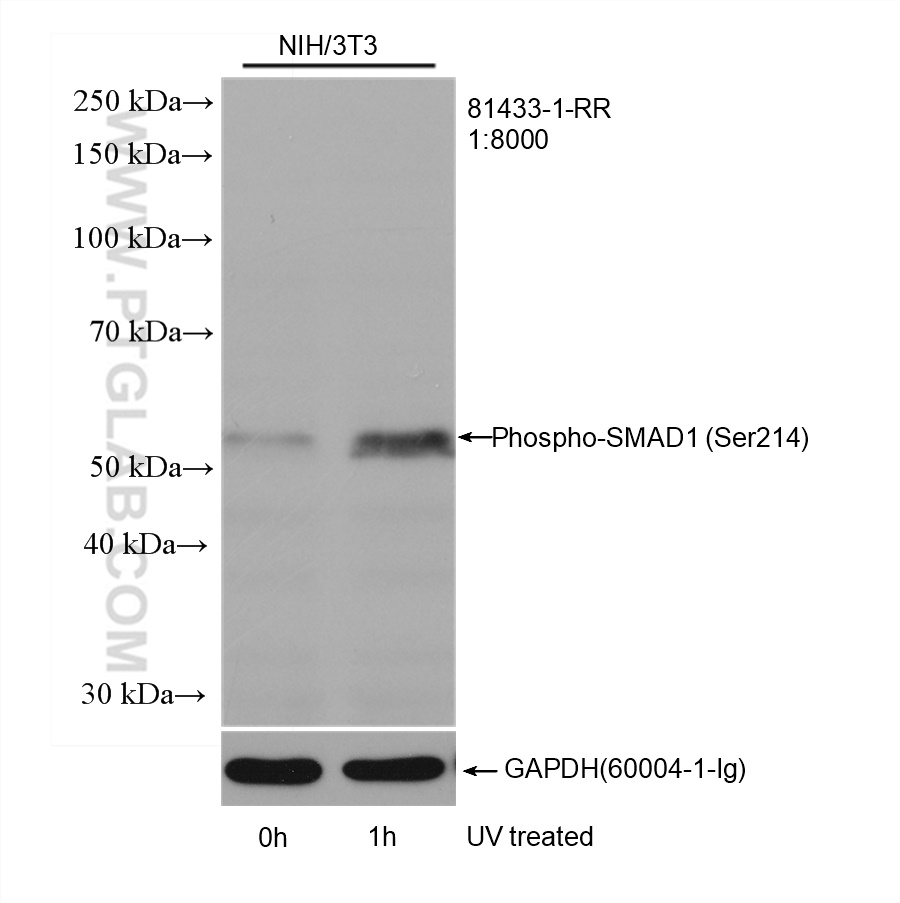验证数据展示
经过测试的应用
| Positive WB detected in | UV treated A431 cells, UV treated NIH/3T3 cells, Calyculin A treated HepG2 cells |
推荐稀释比
| 应用 | 推荐稀释比 |
|---|---|
| Western Blot (WB) | WB : 1:2000-1:16800 |
| It is recommended that this reagent should be titrated in each testing system to obtain optimal results. | |
| Sample-dependent, Check data in validation data gallery. | |
产品信息
81433-1-RR targets Phospho-SMAD1 (Ser214) in WB, ELISA applications and shows reactivity with human, mouse samples.
| 经测试应用 | WB, ELISA Application Description |
| 经测试反应性 | human, mouse |
| 免疫原 | Peptide 种属同源性预测 |
| 宿主/亚型 | Rabbit / IgG |
| 抗体类别 | Recombinant |
| 产品类型 | Antibody |
| 全称 | SMAD family member 1 |
| 别名 | SMAD1, JV4-1, JV41, hSMAD1, BSP-1 |
| 计算分子量 | 52 kDa |
| 观测分子量 | 52 kDa |
| GenBank蛋白编号 | BC001878 |
| 基因名称 | SMAD1 |
| Gene ID (NCBI) | 4086 |
| RRID | AB_2923717 |
| 偶联类型 | Unconjugated |
| 形式 | Liquid |
| 纯化方式 | Protein A purification |
| UNIPROT ID | Q15797 |
| 储存缓冲液 | PBS with 0.02% sodium azide and 50% glycerol , pH 7.3 |
| 储存条件 | Store at -20°C. Stable for one year after shipment. Aliquoting is unnecessary for -20oC storage. |
背景介绍
SMAD family member 1 (Smad1) have been involved in metastatic progression of many cancer types. Smad1 can be induced by many tumor-stimulating cytokines such as the bone morphogenetic protein 2 (BMP2) and TNFα and plays important roles in cell invasion and metastasis. BMP2 signalling is initiated by binding to its specific receptors, which leads to in the phosphorylation and nuclear translocation of Smad1. Translocated Smad1 then modulates the expression of downstream osteogenic genes. (PMID: 32954678, PMID: 30008908)
实验方案
| Product Specific Protocols | |
|---|---|
| WB protocol for Phospho-SMAD1 (Ser214) antibody 81433-1-RR | Download protocol |
| Standard Protocols | |
|---|---|
| Click here to view our Standard Protocols |


